How to Tell the Difference Between Types of Cheese and How to Cut Them
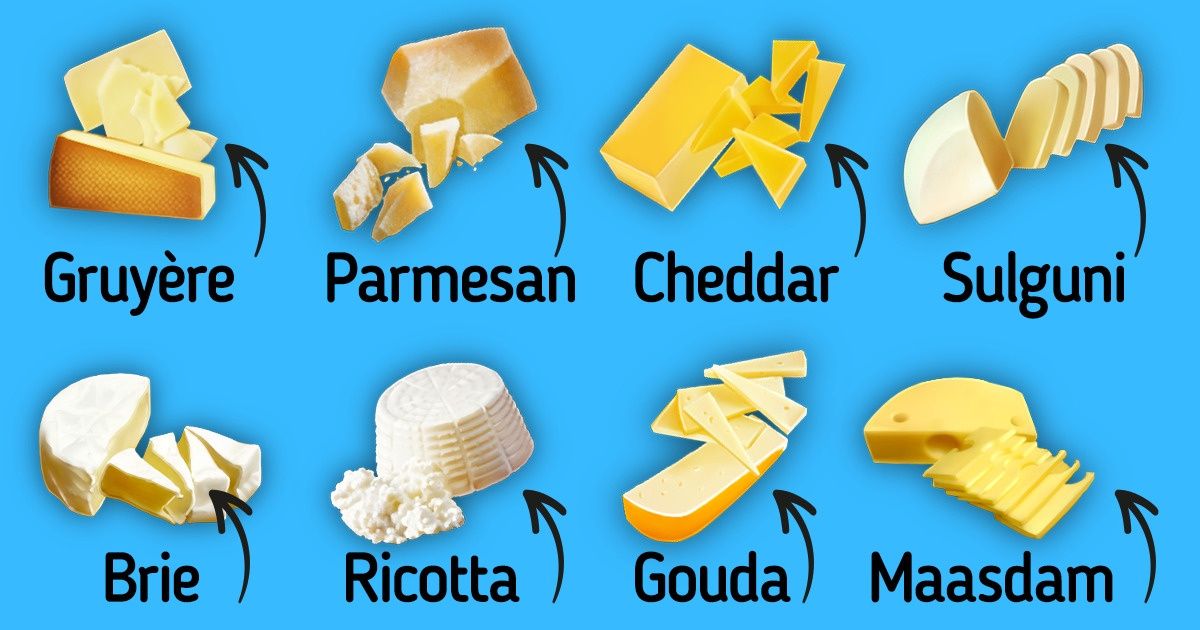
Cheese appeared even before the written language did. There is a theory that people learned to make cheese when sheep were domesticated, which is around 8,000 BC. Since then, this tasty nourishing food with a long shelf life has not lost its popularity. And today there are more than 1,000 varieties of cheese.
5-Minute Crafts would like to tell you about the most popular types of cheese and the right way to cut them.
Types of cheese
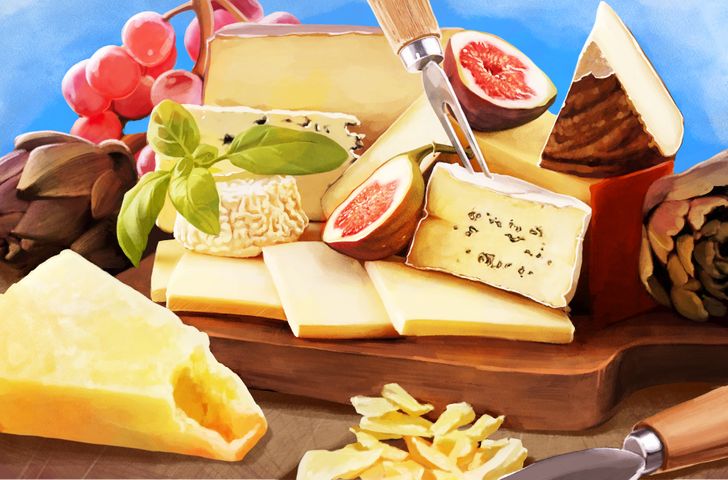
Cheeses can be classified by the duration of fermentation, texture, fat content, method of production, milk, country, and region of origin.
The most popular classification is based on moisture content:
- soft cheeses like cream cheese and Brie
- semi-soft cheeses like Munster
- semi-hard cheeses like Emmental and Gruyère
- hard cheeses such as Grana Padano and Parmigiano
This classification is common, but not very accurate. The lines between the types of cheese are fairly arbitrary. This is because the same type of cheese can be made in a harder and softer “format.” The amount of moisture in the cheese depends on the aging time and the pressure under which the cheese is placed in the molds.
Separate large categories include moldy cheeses, like white and blue cheeses, cheeses made from the milk of various animals, for example, cheese from goat’s milk or sheep’s milk. There are also brined cheeses like feta, Bryndza, or Halloumi.
We will tell you about the most popular types of cheese.
Hard cheeses
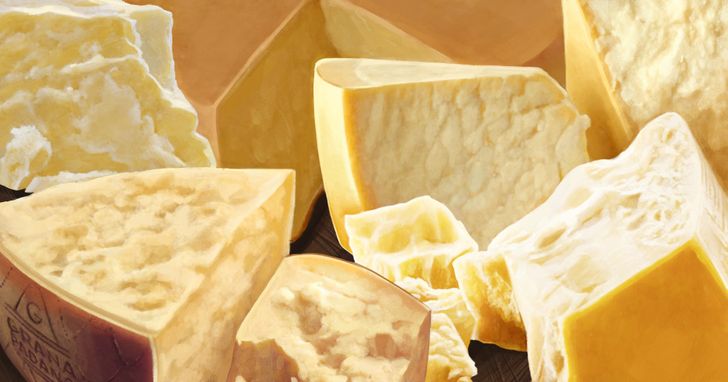
Hard or granular cheeses include:
- Appenzeller (Switzerland)
- Bergkäse (Austria/Germany/Switzerland)
- Cheddar (UK)
- Dubliner (Ireland)
- Emmentaler (Switzerland)
- Grana Padano (Italy)
- Manchego (Spain)
- Pecorino (Italy)
Semi-hard cheese
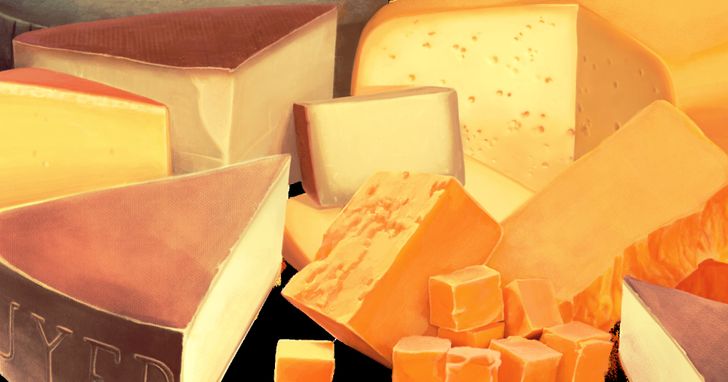
Semi-hard cheeses include:
- Gouda (Netherland)
- Edam (Netherland)
- Cheddar (England)
- Jarlsberg (Norway)
- Cantal (France)
- Kashkaval (Bulgaria, Romania, Serbia)
- Tête de Moine (Switzerland)
Blue cheeses
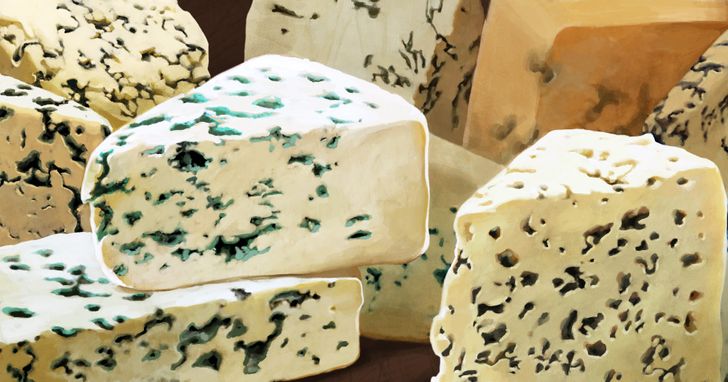
Blue cheeses include:
- Roquefort (France)
- Gorgonzola (Italy)
- Stilton (England)
White mold cheeses
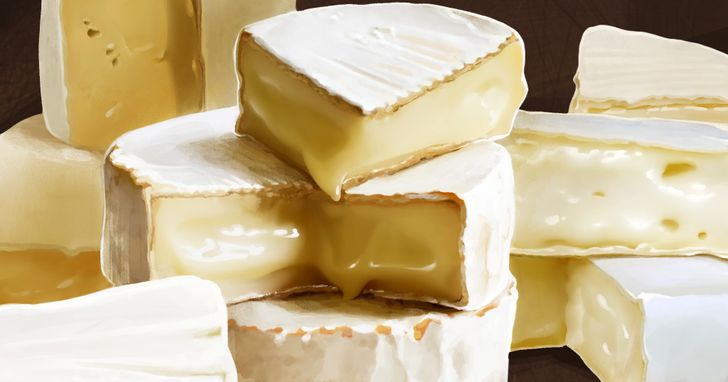
White mold cheeses include:
- Brie (soft)
- Camembert (soft)
- Limburger (soft)
- Appenzeller (hard or semi-hard)
Soft cheeses
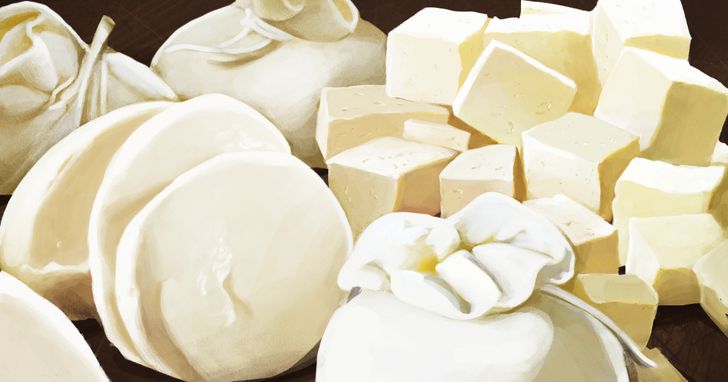
Soft cheeses include:
- Mozzarella
- Camembert
- Brie
- Cream cheese
- Feta
- Ricotta
Goat cheeses
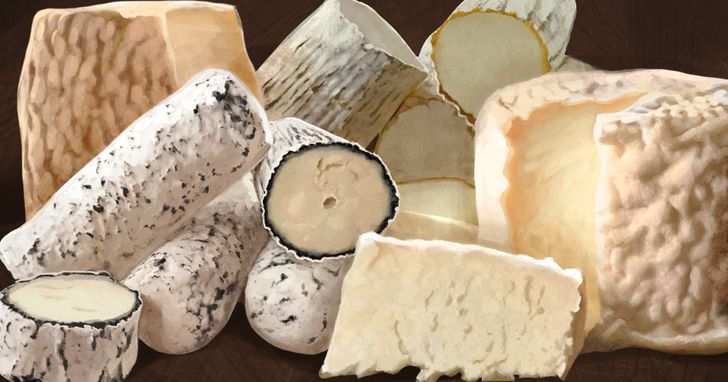
Goat cheeses include:
- Chevre (France)
- Bucheron (France)
- Feta (Greece)
- Sainte-Maure de Touraine (France)
- Garrotxa (Spain)
Tools for cheese cutting
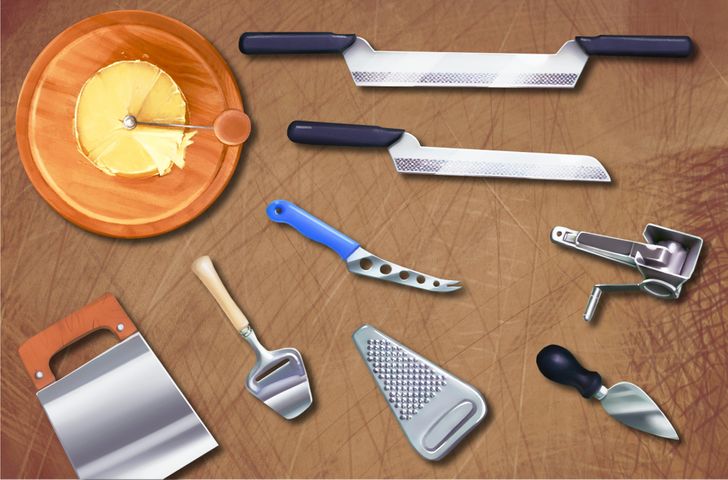
There are different tools used to cut cheese:
- mezzaluna knife
- hard cheese knife
- soft cheese knife
- cheese slicer
- cheese plane
- girolle
- grater
How to cut cheese
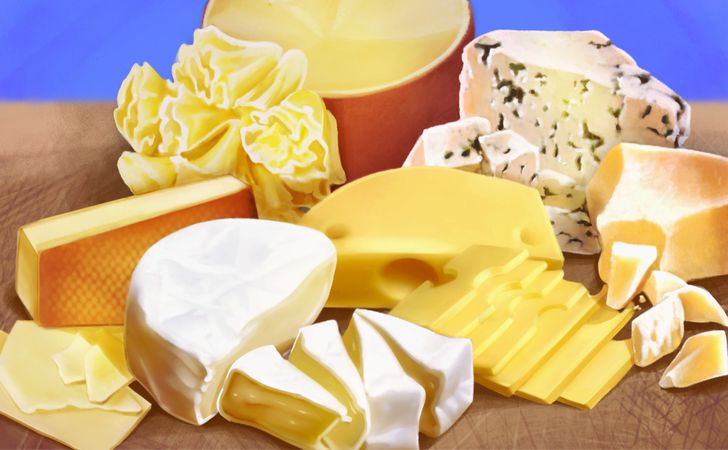
There are some general principles that govern the proper cutting of cheese:
1. Parmigiano is chiseled off with a small hard cheese knife.
2. Gorgonzola should be sliced with a long, thin, soft-cheese knife. The shape of the slices may differ depending on the way the cheese is served.
3. Brie is a soft cheese that can leak, so you should cut it with a very sharp knife. This cheese is round, so you should cut it like a pie or a cake.
4. Maasdam cheese has big holes. It should cut into rectangular slices.
5. Gouda is a semi-hard cheese that should be cut into pieces that are a few millimeters thick. They can have a triangular shape.
6. Cheddar is cheese that can be hard or semi-hard. If you have semi-hard Cheddar, cut it into thin pieces that can later be cut into small cubes.
7. They use a girolle to cut Tête de Moine. It cuts the cheese into the thinnest slices that curl into “flowers.”
8. Mozzarella is soft young cheese that you shouldn’t cut into thin pieces because it can lose its shape. Therefore, they usually cut it into thick pieces with a sharp knife.
9. Gruyère is another hard cheese that is cut into rectangular pieces with a thin knife.
10. Tilsit like other semi-hard cheeses can be cut into rectangular pieces.
11. Ricotta is a soft cheese that can’t be cut because of its texture. It can be served on a plate, smeared on a piece of bread, toast, a cracker, or even sweet buns.
12. Sulguni is easily cut into thick pieces so that the cheese doesn’t lose its shape.
If you want to make a cheese platter, all cheeses on the plate should be cut in a different way and laid out from the weakest to the strongest taste intensity.